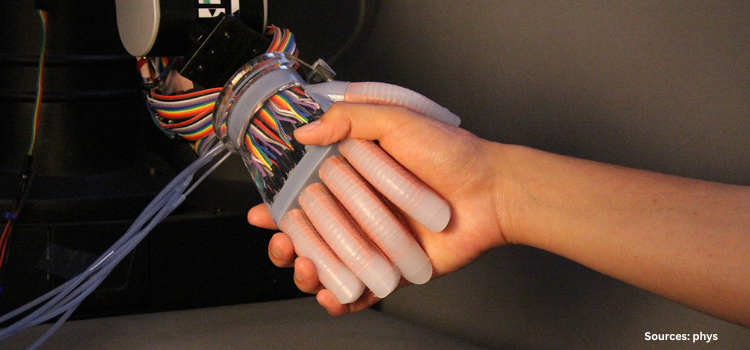Middle East Eye Tracking Market by Offering (Hardware, Software), by Mounting Type (Head Mounted, Wheelchair Mounted, Table Device Mounted), by Tracking Type (Remote Tracking, Mobile Tracking) by Application (Assistive Communication, Human Behaviour Research, Other Application), by Industry Vertical (Retail & Advertisement, Consumer Electronic, Healthcare & Research, Government & Defense, Aerospace, Automotive & Transportation)- Opportunity Analysis and Industry Forecast, 2024– 2030
Industry: Semiconductor & Electronics | Publish Date: 29-Apr-2025 | No of Pages: 165 | No. of Tables: 118 | No. of Figures: 83 | Format: PDF | Report Code : SE2461
US Tariff Impact on Middle East Eye Tracking Market
Trump Tariffs Are Reshaping Global Business
Middle East Eye Tracking Market Overview
The Middle East Eye Tracking Market size was valued at USD 20.0 million in 2023, and is predicted to reach USD 118.8 million by 2030, at a CAGR of 27.8% from 2024 to 2030. The eye tracking industry is a comprehensive ecosystem of products, services, and technologies designed to measure and analyze eye movements, gaze direction, and fixation points. This market includes specialized hardware such as cameras, sensors, and light sources, as well as software solutions for data processing and analysis.
Eye tracking also known as eye monitoring systems are applied across various industries such as psychology, market research, user experience testing, and human-computer interaction to provide insights into consumer behavior, visual perception, and interface usability. In the contemporary landscape of user experience and human-computer interaction, eye monitoring systems emerges as an indispensable tool, offering invaluable insights into user engagement and interface usability.
Advancements in Autism Diagnosis Drives the Middle East Eye Tracking Market Growth
The rapid progress of eye-tracking technology for autism diagnosis is significantly driving the eye tracking market across the Middle East. Recent studies in the region have shown promising results, demonstrating the utility of combining eye-tracking data with machine learning algorithms to accurately distinguish individuals with autism from those without.
With impressive metrics such as an accuracy rate of 88.6%, specificity of 92.31%, and sensitivity of 86.63%, this technology is emerging as a valuable tool for early autism detection. The healthcare sector's recognition of the potential for more precise and efficient diagnostic procedures is fueling a growing demand for advanced eye tracking solutions in the Middle East.
Increasing Adoption of Eye Tracking Technology in Market Research Sector Boosts the Market
Eye tracking technology has become integral to market research in the Middle East, offering precise measurements of how individuals respond to advertisements by tracking eye movements and analyzing gaze patterns.
This capability provides deep insights into consumer behavior, preferences, and engagement levels, enabling businesses to optimize their advertising strategies effectively. As the demand for targeted and impactful marketing grows in the region, businesses are increasingly recognizing the importance of eye tracking technology in refining their approaches.
Proliferation of Alternative Technologies Hinders the Middle East Eye Tracking Market Expansion
The Middle East eye tracking market expansion is significantly restrained by the proliferation of alternative technologies such as gesture recognition, unimodal methods, and multimodal activity recognition. These technologies excel at recognizing emotions conveyed through facial expressions, hand gestures, and body language.
In sectors such as consumer electronics and gaming, where predicting user behavior is crucial, these alternative technologies offer valuable insights that surpass the capabilities of traditional eye tracking market. As a result, the availability and adoption of these alternatives limit the market's growth potential by providing competitive solutions that meet diverse user needs and preferences.
Integration of AR and VR in Eye Tracking Technology Create Future Market Prospects
The swift integration of eye monitoring systems across various sectors, including augmented reality (AR), virtual reality (VR), lie-detection systems, and cognitive testing, is poised to unlock significant opportunities within the Middle East eye tracking market growth.
This technology plays a crucial role in enhancing image clarity and reducing eye strain in AR and VR applications, making it a dynamic field driven by startups and investments from tech giants such as Apple, Google, Facebook, and Samsung.
For instance, in March 2022, Mojo Vision announced a new advanced prototype of its AR smart contact lens Mojo Lens. The prototype includes various new hardware features and advanced technologies such as advanced display, communications, eye tracking technology, and a power system embedded into the lens. It allows users to access timely information quickly and discreetly without forcing them to look down at a screen.
Competitive Landscape
The key market players operating in the Middle East eye tracking industry include Tobii , IMMERSIX, NovaSight , Blink Technologies, TecH MRC, 4SiGHT , iMotions, Brain Products GmbH, Consort World, Eyeviation and others.
Middle East Eye Tracking Market Key Segments
By Offering
-
Hardware
-
Software
By Mounting Type
-
Head Mounted
-
Wheelchair Mounted
-
Table Device Mounted
By Tracking Type
-
Remote Tracking
-
Mobile Tracking
By Application
-
Assistive Communication
-
Human Behaviour Research
-
Other Application
By Industry Vertical
-
Retail & Advertisement
-
Consumer Electronic
-
Healthcare & Research
-
Government & Defense
-
Aerospace
-
Automotive & Transportation
-
Others
By Countries
-
Middle East
-
Saudi Arabia
-
United Arab Emirates (UAE)
-
Israel
-
Qatar
-
Kuwait
-
Oman
-
Other Countries
-
Key Players
-
Tobii
-
IMMERSIX
-
NovaSight
-
Blink Technologies
-
TecH MRC
-
4SiGHT
-
iMotions
-
Brain Products GmbH
-
Consort World
-
Eyeviation
REPORT SCOPE AND SEGMENTATION:
|
Parameters |
Details |
|
Market Size in 2023 |
USD 20.0 Million |
|
Revenue Forecast in 2030 |
USD 118.8 Million |
|
Growth Rate |
CAGR of 27.8% from 2024 to 2030 |
|
Analysis Period |
2023–2030 |
|
Base Year Considered |
2023 |
|
Forecast Period |
2024–2030 |
|
Market Size Estimation |
Million (USD) |
|
Growth Factors |
|
|
Companies Profiled |
10 |
|
Market Share |
Available for 10 companies |
|
Customization Scope |
|
|
Pricing and Purchase Options |
Avail customized purchase options to meet your exact research needs. |
|
Customization Scope |
Free customization (equivalent up to 80 working hours of analysts) after purchase. Addition or alteration to country, regional, and segment scope. |
|
Pricing and Purchase Options |
Avail customized purchase options to meet your exact research needs. |














 Speak to Our Analyst
Speak to Our Analyst




















